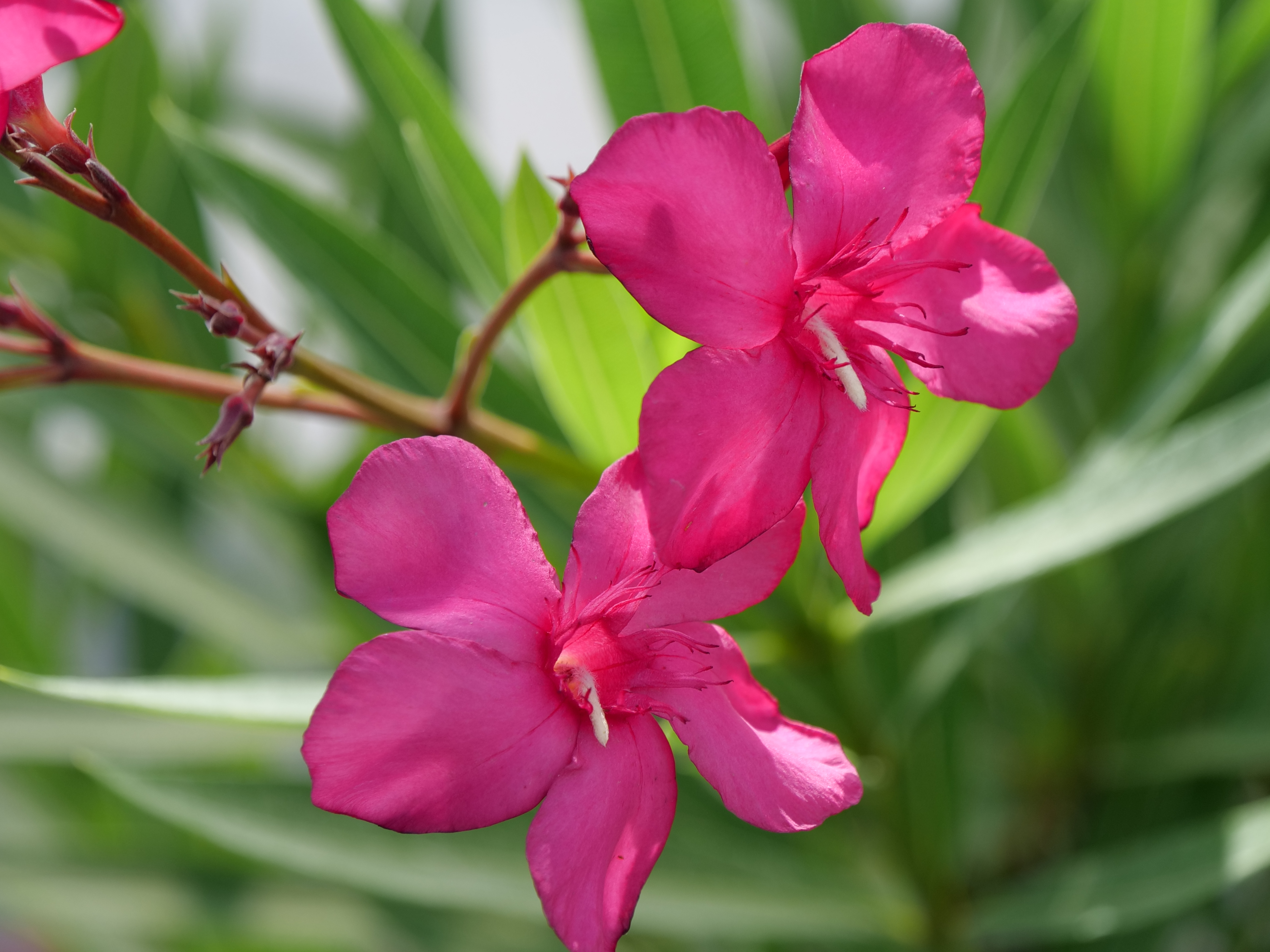
Warning: deadly flower very poisonous
Oleander (Nerium oleander) is a beautiful and hardy flowering shrub that is known for its showy blossoms and ability to thrive in warm climates. Here's a guide on how to grow oleander:
Climate: Oleander is well-suited for warm climates and can tolerate heat and drought conditions. It is typically grown in USDA hardiness zones 8 to 11. It prefers full sun but can tolerate partial shade.
Soil: Oleander is adaptable to various soil types but prefers well-draining soil. It can tolerate slightly alkaline soil. If your soil is heavy or poorly draining, you can amend it with organic matter such as compost to improve drainage.
Planting: Choose a suitable location in your garden that receives ample sunlight. Dig a hole that is slightly larger than the root ball of the oleander plant. Place the plant in the hole, ensuring that the top of the root ball is level with or slightly above the soil surface. Backfill the hole with soil, firming it gently around the roots. Water the plant thoroughly after planting.
Watering: While oleander is drought-tolerant once established, it benefits from regular watering during its establishment period. Water deeply but infrequently to encourage deep root growth. Once established, water during dry spells or when the top inch of soil feels dry. Avoid overwatering, as oleander does not tolerate wet feet.
Mulching: Apply a layer of organic mulch around the base of the plant to help conserve moisture, suppress weed growth, and regulate soil temperature. Keep the mulch a few inches away from the plant's stem to prevent rot.
Pruning: Prune oleander after flowering to maintain its shape, remove dead or damaged branches, and encourage new growth. Wear gloves and take care when pruning, as oleander contains toxic compounds. Dispose of pruned material properly.
Fertilization: Oleander is generally not heavy feeders and can thrive in nutrient-poor soil. However, if you wish to fertilize, use a balanced slow-release fertilizer in early spring. Follow the package instructions for application rates. Avoid excessive fertilization, as it can lead to excessive foliage growth and reduced flowering.
Pests and Diseases: Oleander is generally resistant to pests and diseases. However, it can occasionally be affected by aphids, scales, or caterpillars. Monitor the plant regularly and take appropriate measures if any pests are observed. Insecticidal soaps or horticultural oils can be used to control pests. Oleander is also susceptible to a fungal disease called oleander leaf scorch. If this disease is prevalent in your area, choose disease-resistant varieties or consult with local experts for guidance.
Propagation: Oleander can be propagated from stem cuttings. Take 6- to 8-inch long cuttings from healthy, mature plants in spring or early summer. Remove the lower leaves, dip the cut end in rooting hormone, and plant the cutting in a well-draining potting mix. Keep the soil consistently moist until roots develop.
Caution: It's important to note that all parts of the oleander plant, including the leaves and sap, are highly toxic if ingested. Take precautions to keep oleander out of reach of children and pets, and wear gloves when handling the plant.
By following these guidelines, you can enjoy the beauty of oleander in your garden.

No comments:
Post a Comment